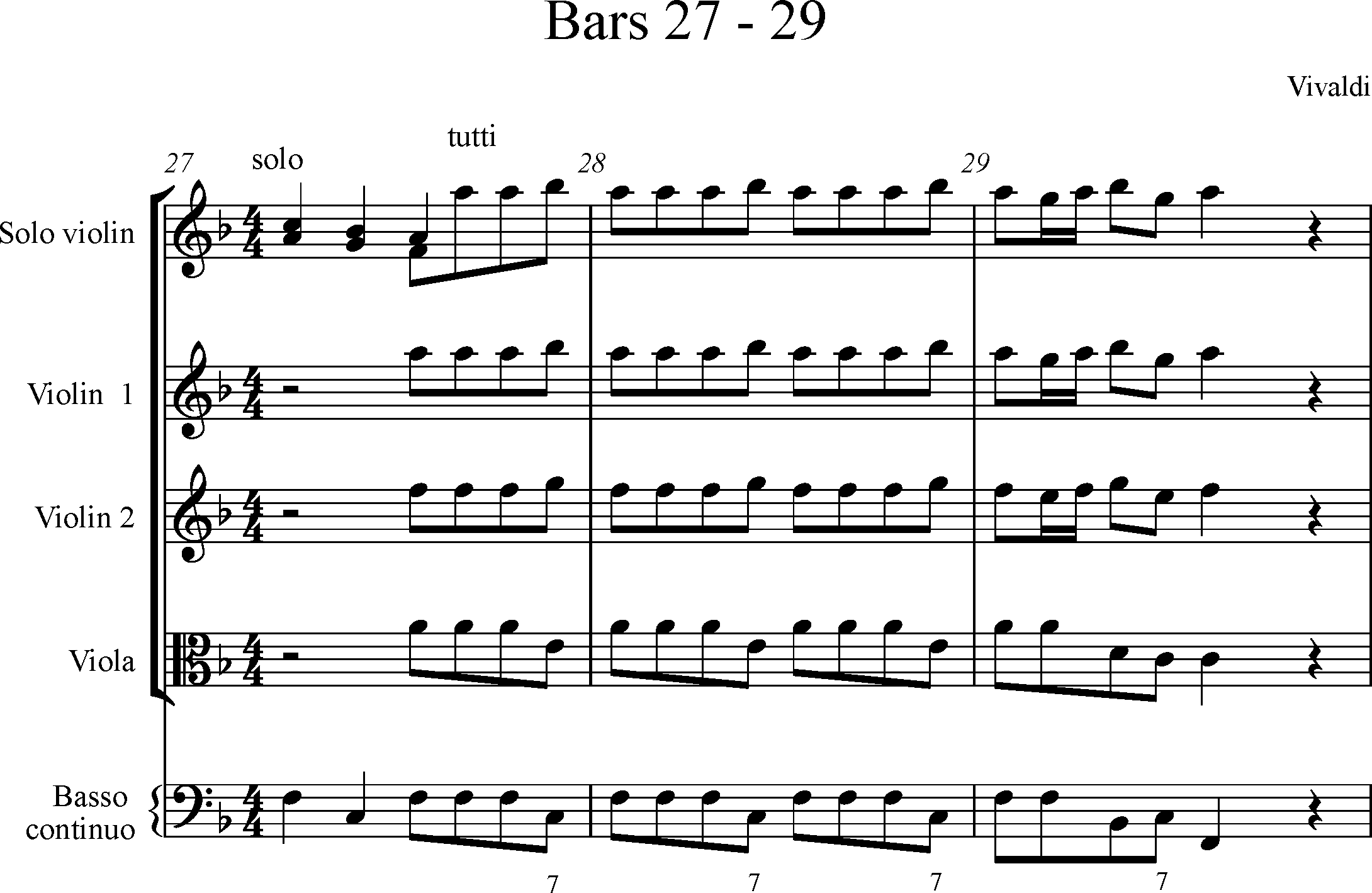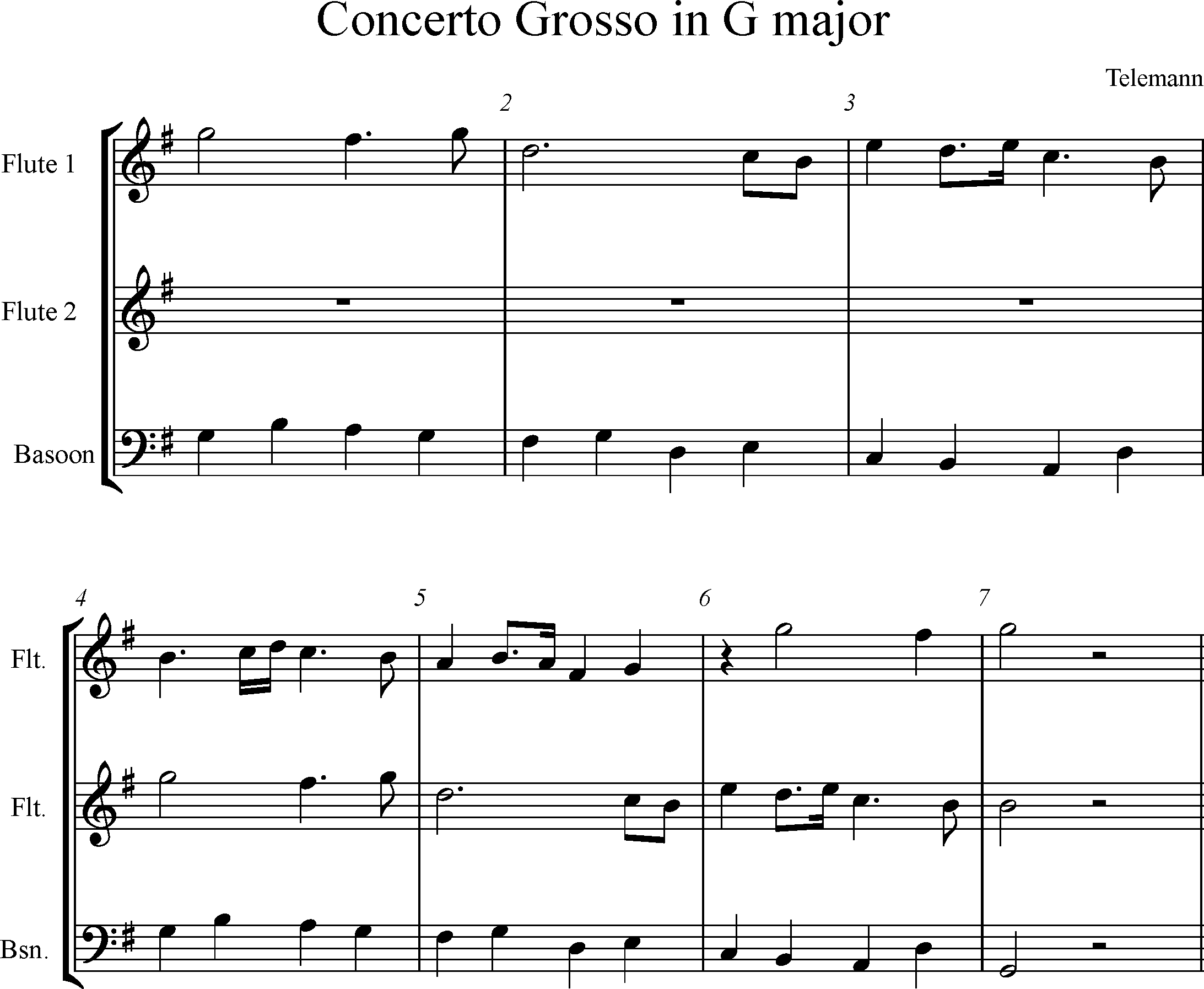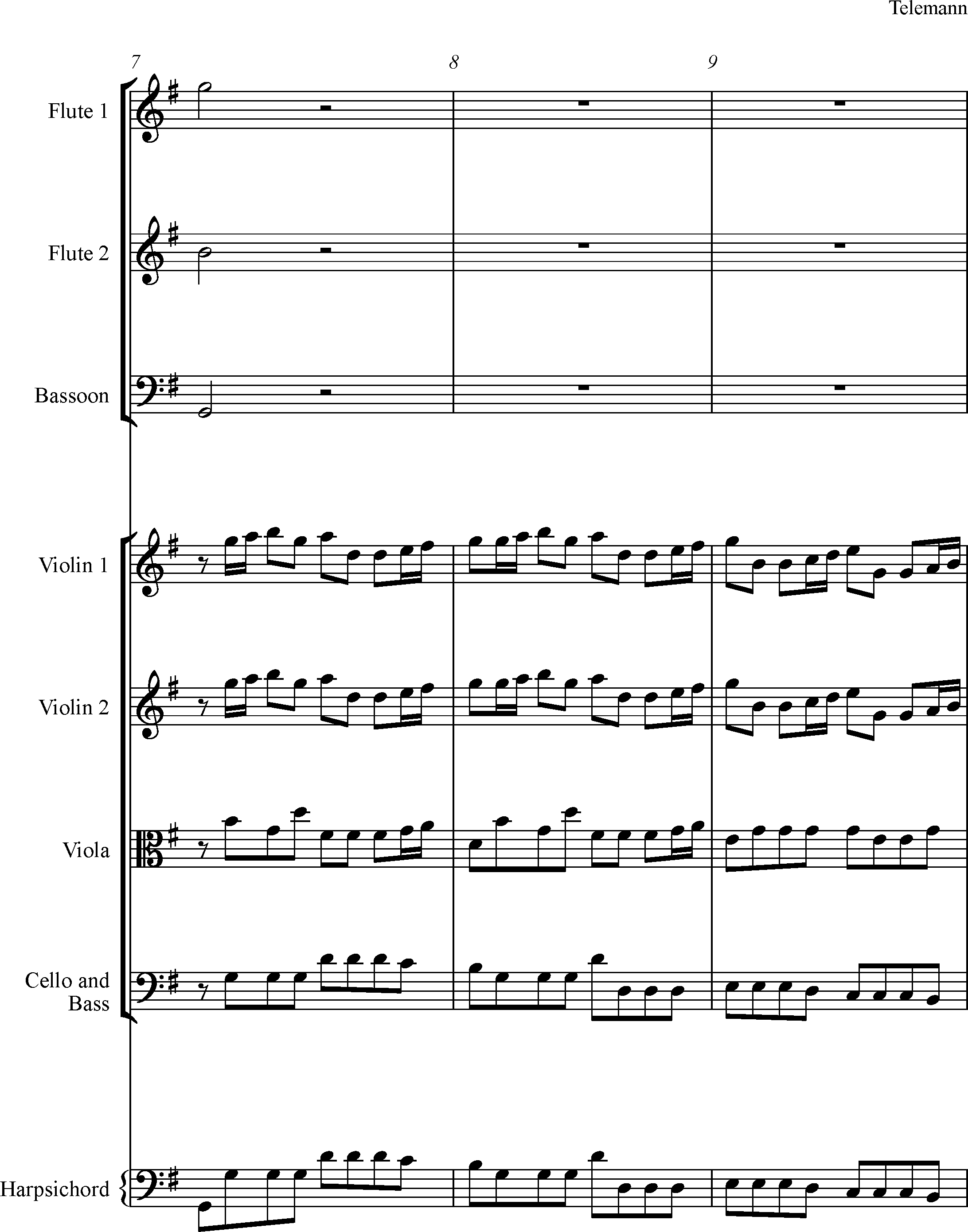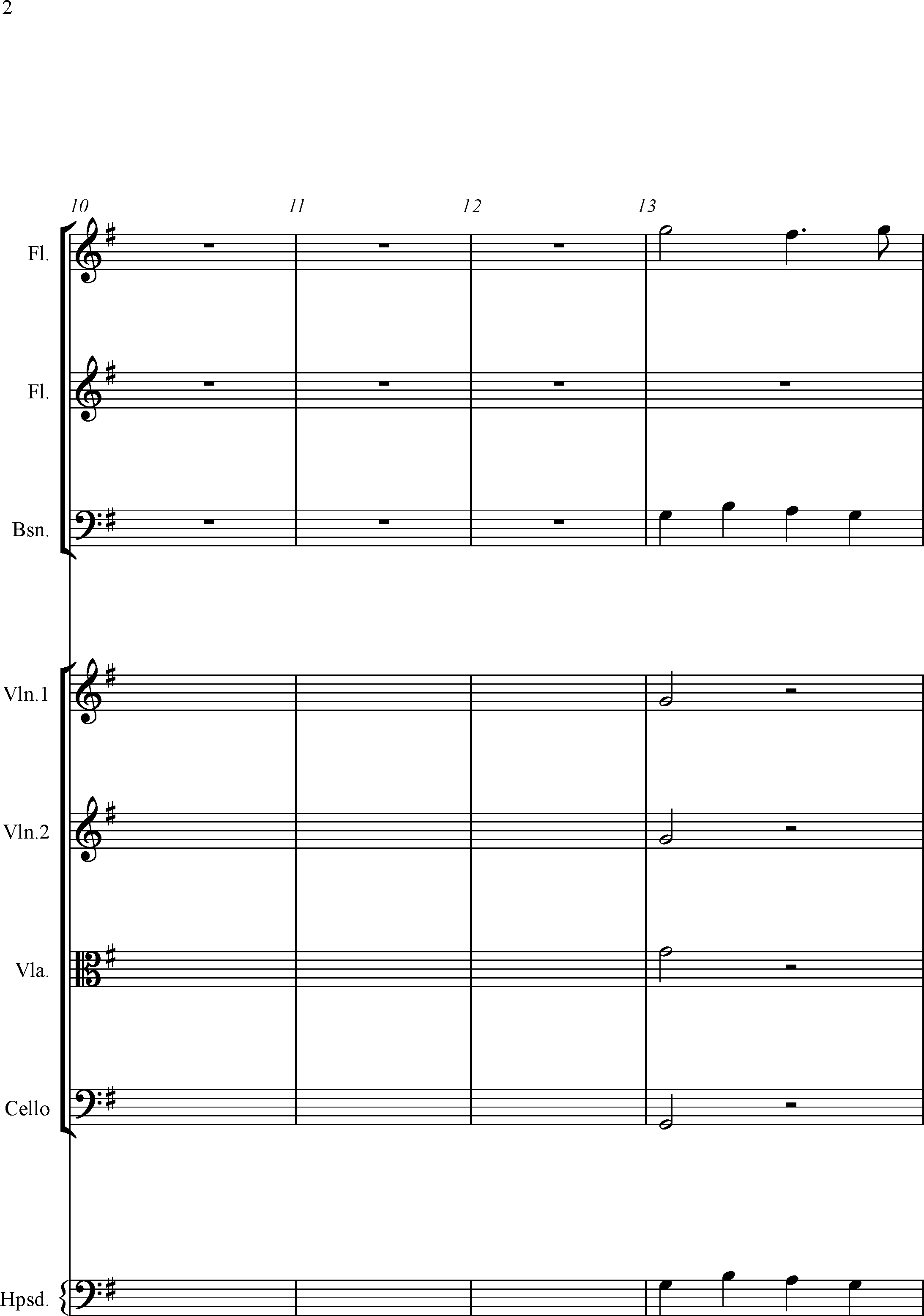Exercise 1
Fig. 1

The following extract (figure 2) comes from the soloist’s first episode. Notice how the composer uses and adapts material from the opening ritornello.
Fig. 2

Figure 3 quotes the next ritornello which starts in bar 27.
Which three features are different this ritornello compared to the opening ritornello (figure 1)?
Fig. 3

The next ritornello comes from bar 57 and lasts until bar 67. Figure 4 quotes bars 57-63.
This time, the tonic is G minor but what is the new key that’s established in bar 63?
Fig. 4

Notice the cycle of fifths which starts in bar 60 creating a sequence and leading the music towards the new tonic.
Exercise 2
Listen to the first movement of the Concerto Grosso in G major by Telemann.
Here is the instrumentation:
- Two flutes
- Bassoon
- Strings
- Basso continuo.
The parts of the two flutes and bassoon in the opening bars are quoted belwo (figure 5). What is a characteristic of the second flute part in this quotation?
Fig. 5

In bar 7 the first ritornello appears and it introduces contrasting material. Write in the chords in bars 7-9 either as symbols I, IV, V etc or using figured bass.
Then, try to fill in bars 10-12 (strings and harpsichord) ending with a perfect cadence (124-131) that leads into the solo instruments’ next episode.
In this exercise you should follow the harmonic and rhythmic pattern that Telemann himself uses in bars 7-9.
Fig. 6


Here is the pattern of the whole movement’s episodes and ritonrnelli. Write in the keys in the empty boxes. The V (D major) in bars 21- 31 denotes the harmony’s emphasis on the dominant chord in the key in question.
| Bar 1-7 | Bar 7-13 | Bar 13-19 | Bar 19-21 | Bar 21-31 | Bar 31-37 | Bar 37-45 |
|---|---|---|---|---|---|---|
|
G major |
G major |
D major |
D major -> E minor |
| Bar 45-46 | Bar 47-56 | Bar 56-57 | Bar 57-61 | Bar 61-64 | Bar 64-68 | Bar 64-74 |
|---|---|---|---|---|---|---|
|
V (G major) |
G major |